feature
Birds Near and Far
Students investigate local environmental phenomena on campus and at a local pond
Science and Children—September/October 2020 (Volume 58, Issue 1)
By Erin Bridges Bird, Peggy Harte, and Heidi L. Ballard
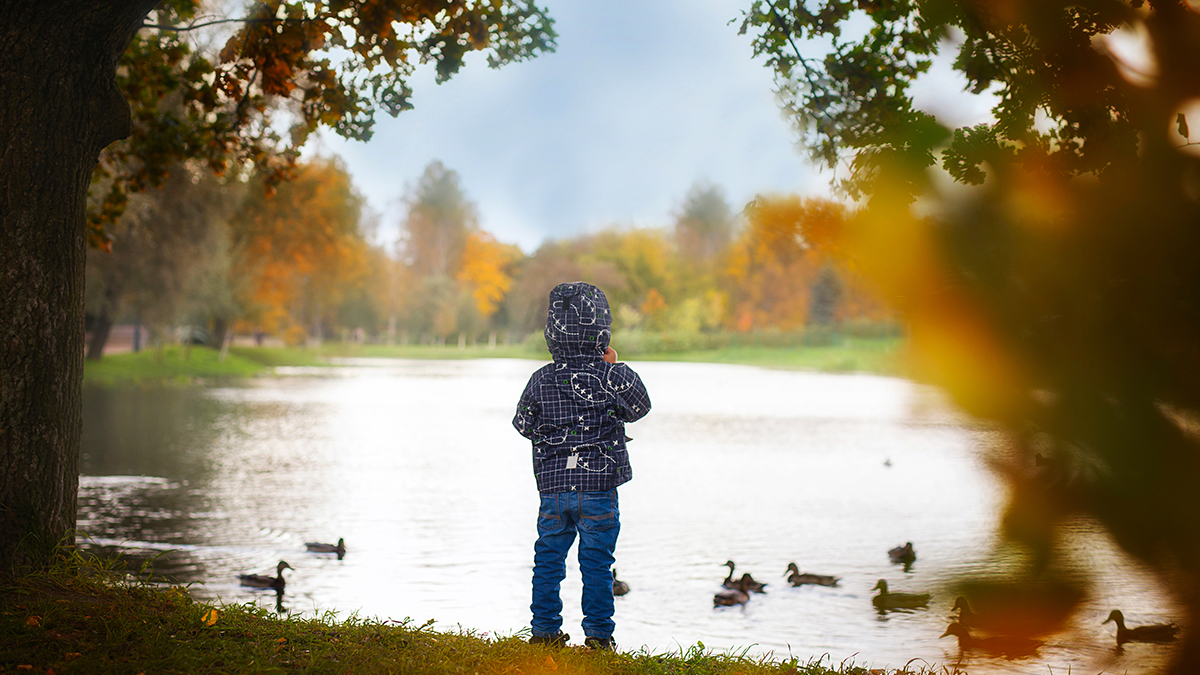
As she reflected on her class’s community and citizen science project on bird species diversity and abundance, fourth-grader Sonia noted that she felt “like a scientist…especially during the pond [field trip] when we were looking for birds…We’re only fourth-graders––we’re doing what some actual scientists do in real life, and not just learn about it, like, live it.” For educators hoping to provide “real” or authentic outdoor science learning experiences whether through school field trips or while engaging in distance learning, this is music to our ears. Sonia’s self-identification with science is an outcome from youth-focused community and citizen science projects, where members of the public participate in and contribute to scientific research efforts (Ballard, Dixon, and Harris 2017).
What made Sonia and her classmates’ outdoor science experience unique and applicable to both in-school and distance-learning is that students conducted their scientific research at different locations: on their campus and while on two seasonal field trips to a neighborhood pond and wetland area used by the city for flood control (See timeline in Figure 1). With the pond as a second data collection site, students compared their bird biodiversity datasets to understand each ecosystems’ characteristics and how different bird species are supported in different habitats. Similarly, students could compare their school campus data to multiple sites across neighborhood locations.
Timeline
September to October (Fall)
- Students are introduced to the prompt: “What animals visit our school campus?”
- Students practice collecting data on their school campus.
October
- First field trip to pond (Fall)
November to December
- Students compare their data sets between their campus and the pond site.
- Students continue to make observations on their school campus.
March to April (Spring)
- Students resume collecting data on school campus.
- Students compare fall and spring data sets from their campus.
April
- Second field trip to pond (Spring)
May
- Students compare spring data sets between their campus and the pond site.
- Students consider the ecological health of their school campus and the pond based on their data and other observations.
June
- Students present findings to the city’s Park and Recreation Commission.
Youth participation in citizen science is a growing topic of interest for educators (Harris and Ballard 2018). Citizen science gives students a unique opportunity to engage with their own research, as well as data collected by other citizen scientists. Often, citizen science projects focus on students collecting and submitting data for scientists, which can sometimes limit opportunities to engage in the entire scientific process. In this case, after Sonia and her classmates ensured their bird species data was accurate, they submitted it to the citizen science project eBird, a public database used by scientists around the world to study bird populations. However, that was not the full extent of their scientific work. They also developed their own research questions and shared their data findings with city officials to inform environmental conservation decisions. These additional ways of using science for local decision-making are typical of community science. This convergence of goals through community and citizen science provided these students with a unique opportunity to conduct science in ways meaningful to their lives and broader community—and to professional scientists (Ballard, Dixon, and Harris 2017).
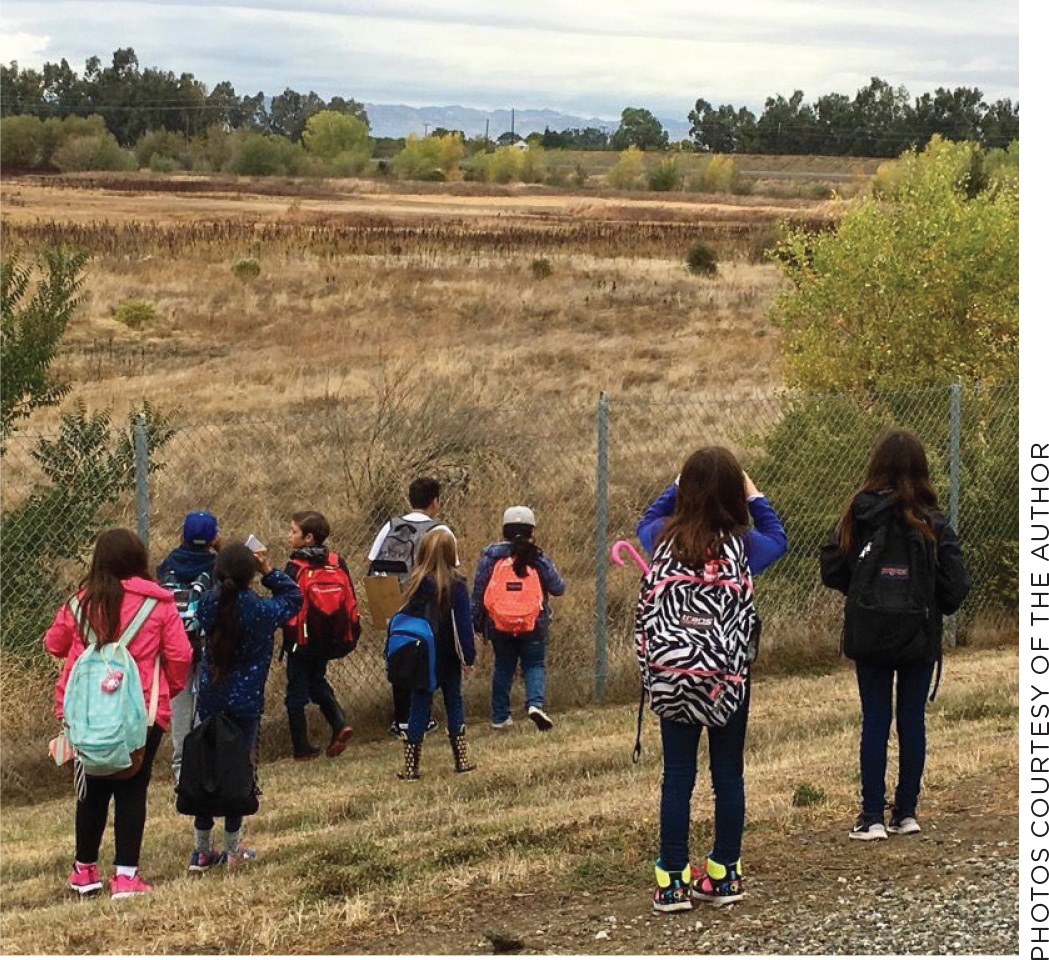
Students scan the area of the pond site for birds.
Outdoor science learning experiences pose exciting opportunities for teachers to take student learning beyond the school campus, or if during distance learning, the virtual classroom, and into new community contexts. However, whether in school or in their own backyards and neighborhoods, these outdoor science learning experiences need to connect with long-term learning goals. Teachers can go beyond one-time outdoor science activities to foster sustained science learning by including pre- and post-field trip lessons, like activities for students to generate their own research questions and compare data collected from different sites. Accordingly, we share the extended science learning experience of Sonia and her classmates and how this community and citizen science approach can be used to support student science learning through distance or hybrid models.
Real Science Outdoors
Sonia and her fourth-grade classmates investigated local phenomena near and far, which extended their science learning in real and meaningful ways. By “real science” we mean that these students used their first-hand environmental observations at their school to develop and investigate original research questions, which then informed their own school and city’s land management, as well as broader scientific research endeavors through eBird. Led by coauthor and classroom teacher Peggy Harte and supported by educational researchers Erin Bridges Bird and Heidi Ballard, we began by prompting students with the overarching question, “Which animals do we share our school campus with?” This could also translate into, “Which animals do you share your neighborhood with?” for distance learning contexts. As Mrs. Harte’s class began to investigate their school campus, students generated their own questions about what they were observing––mostly birds–– and also learned how to answer their questions by collecting and analyzing data. The resulting scientific work focused on understanding local bird species diversity and abundance during two seasons, fall and spring, and at two sites, their school campus and the pond just three miles away. Their resulting questions included, “Which birds did they share their school campus with?” (an inventory of birds on the site) and, “Did the same birds visit the pond as their school campus?” They also speculated, “Why were different birds seen during fall and spring?” and, “Are these different ecosystems balanced and supportive of the birds?”
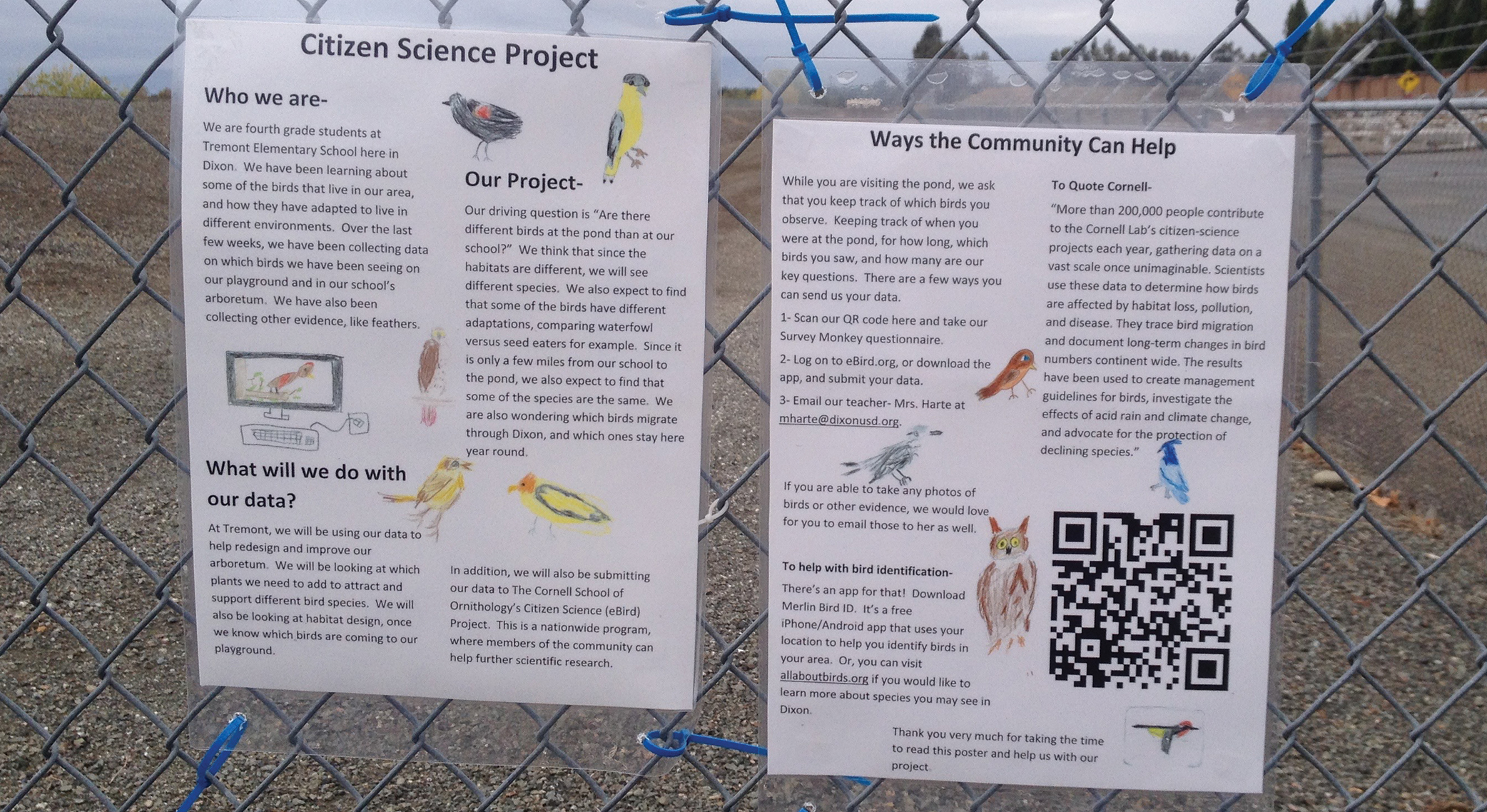
Students reached out to the community for help submitting data on bird sightings.
Students’ scientific work was real in other ways as well. Students submitted their bird species data to the Cornell Laboratory of Ornithology’s online database and citizen science project, eBird. Sharing to this public database gives other scientists access to use those data, which can be used to address local and global questions about bird population dynamics, migration patterns, and impacts of climate change. Conducting community and citizen science work in which students consider data at different sites “near and far,” either through school field trips or student-collected data near their homes, provides a rich context for students to engage in the three dimensions of the Next Generation Science Standards.
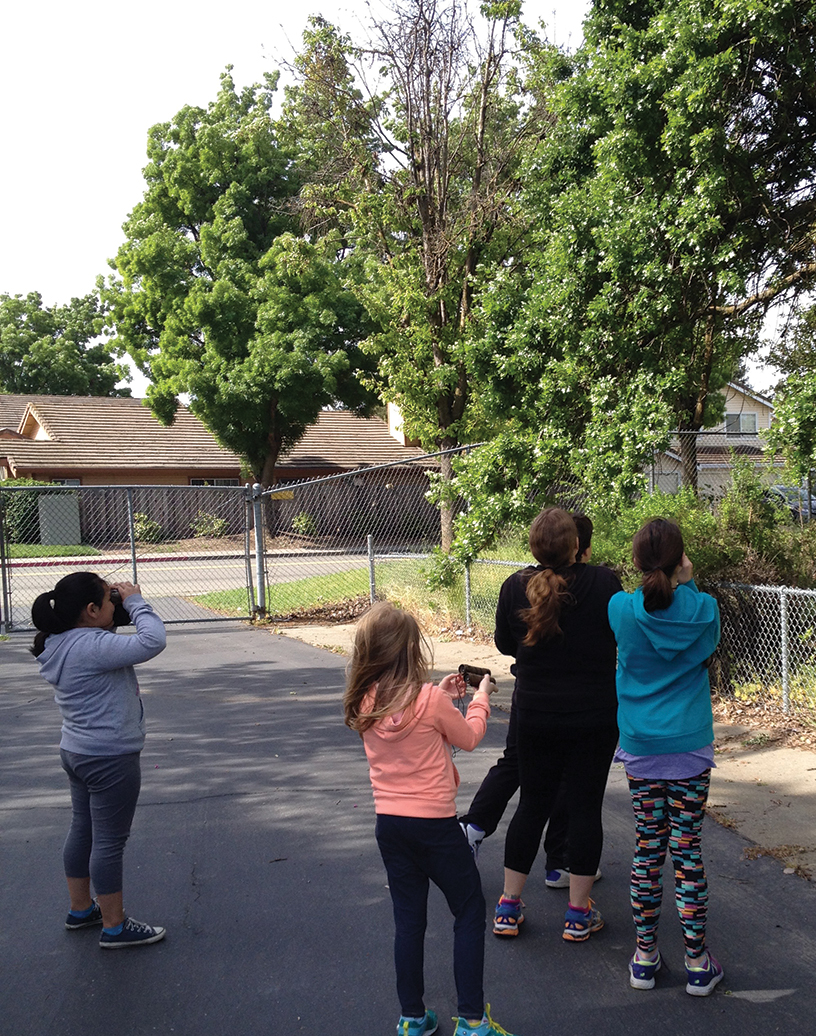
Students observe birds on campus.
Preparing for the Investigation
The initial steps in preparing Sonia and her classmates for their field trip entailed taking them outside on the school campus to learn, practice, and refine their data collection skills. These pre-field trip activities were necessary as accurately identifying birds is challenging. Nonetheless, birds are prevalent in all kinds of habitats and are important indicator species to understand ecosystem health. Mrs. Harte provided students with abundant yet simple observation and identification tools, including how to document bird evidence without directly touching evidence, such as by using tweezers or taking photographs––an important field research procedure for both sanitary purposes and careful documentation. Students documented bird evidence including feathers, nests, bird songs, bird behavior, and bird field markings to help them identify birds, while leaving all artifacts untouched and in the field. Students used tools of their choosing including binoculars, printouts of birds common to the area, and donated phones used as cameras. They also used several apps: the MerlinBirdID app for bird identification, Song Sleuth for identifying bird song and Feather Altas for feather identification. By allowing students to choose their engagement method, students of varied language and skill levels could access, engage with, and contribute to the data collection and analysis. By using science notebooks and protocols they developed to document their findings, students could refer to their prior research findings from season to season and we could monitor student progress throughout the school year by using science notebooks as a formative assessment tool.
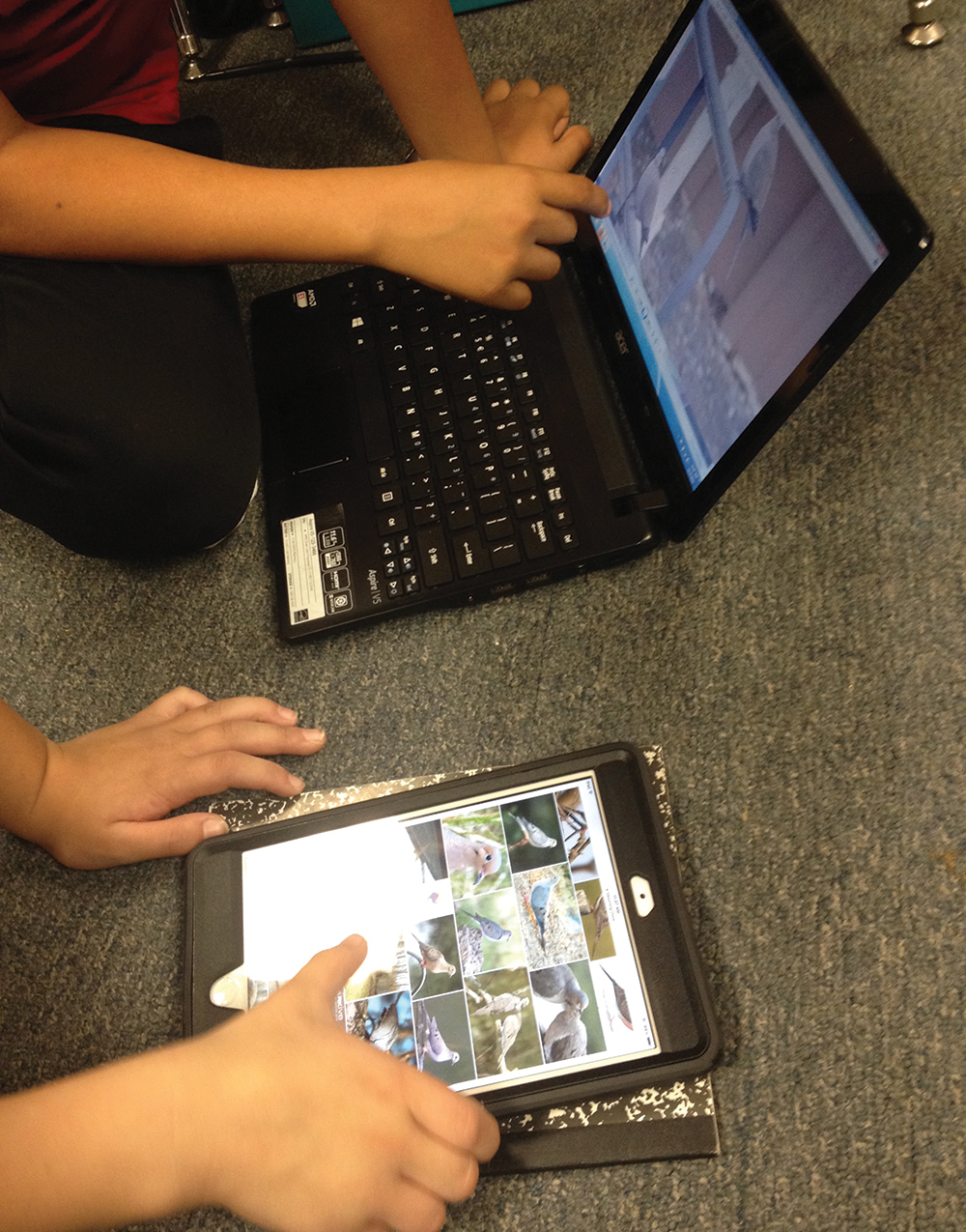
Online resources for bird identification.
The time outside for students to practice their observation skills was bolstered by in-class standards-aligned activities. Students engaged with the science and engineering practices (SEPs) by evaluating, sharing and interpreting their data, as well as modeling their understanding of the system. Working in pairs or groups, students used their collected evidence along with resources like field guides to determine species identification. With Mrs. Harte’s facilitation, students then collectively compiled data they felt certain about. Using observations as evidence allowed students who may not traditionally have entry into scientific debate, such as English learners, the opportunity to engage more fully based on their own first-hand observations. Critical to this process was a classroom culture in which teacher and students validated each other’s contributions by considering and evaluating all ideas and understanding that scientific argumentation was not about right or wrong but revising thinking based on the available evidence (Bird 2019).
In addition to these robust science practices, students learned science content to inform their interpretations of data collected on campus and at the pond. For example, they learned about structure and function principles, both a crosscutting concept (CCC) and disciplinary core idea (DCI), through sorting cards of bird feet, beaks, and eating behaviors (see Internet Resources). This card sort activity matches bird beaks and feet adaptations and demonstrates how particular bird species have adapted to capture and consume particular food types available in different ecosystems including insects, nectar, or aquatic invertebrates. As the students became more aware of the variety of bird beak and feet structures and their functions, they began to contextualize their bird observations within the local environment and consider what ecological factors attracted the birds.
Three months into the new school year, we felt that the students were prepared for their first field trip to the pond having gained confidence with using tools and documenting observations. Students were also prepared with important ornithologist skills, including being quiet as to not scare the birds, looking up to spot birds overhead, and leaving evidence untouched and where they found it. They had become experts on the components of their school ecosystem such as the predator and prey birds present, the food sources and shelter which might attract the birds, and how bird behavior was influenced by human behavior, such as how birds returned to campus after students’ lunch time! Furthermore, the class learned through the eBird database that the pond site had active birders who contributed their data to this citizen science database. The class used eBird to predict which birds they might see while at the pond.
In case students are distance learning, engaging students in pre-outdoor science learning activities can follow a similar structure, with students learning how to make observations from their windows, in their backyards, at a local park or parking lot. There are multiple online resources at Cornell Laboratory of Ornithology’s All About Birds website, and library books or printouts from the website of common local birds can also be used. Online classroom time can then be used for students to share what they observed and evaluate each other’s evidence for bird species identification. Students can then learn about the different places where each collected data and compare their results.
Planning for Success
A collaborative process was supported by dialogue protocols and sentence frames (Figure 2) to allow for a variety of learning styles and language levels to contribute, bringing forward voices and observations that might otherwise not have been shared. By communicating their findings, students ensured that the same bird was not counted twice, that all observations were accounted for, and that bird identification claims were accurate.
Sentence frames
Arguing from Evidence sentence frames
I noticed that if ___________ then _____________
If _______ then _________ but ________________
I agree with ___ because __, but I also noticed ____
I disagree with _______ because _________.
I like the idea of ____ because_____. However . . .
After seeing _’s, I now disagree with___ because__.
Did you ever think of ________________________?
Why did you decide to _______ and not ________?
What do you think would happen if ____________?
What evidence do you have for ________________?
Research sentence frames
When researching on the site ______ I found out that _______.
According to _______ who wrote _________ (bird) ______
When comparing ______ (source 1) with ______ (source 2) I
noticed that over time, my animal’s habitat/population has
___________.
While reading __________ I learned that _______________.
Researchers at _______ have found that ______ by ________.
There are multiple factors to consider when planning a community and citizen science-based field trip or distance learning outdoor science experience. For instance, there are many project topics to choose from beyond bird monitoring, such as monitoring plants, pollinators, and water and soil quality. Harris and Ballard (2018) provide project ideas and detailed implementation strategies. There are also many important safety considerations, such as exposure to allergens and the Sun. NSTA’s Field Trip Safety guide (2015) recommends visiting field sites and evaluating conditions before bringing students (see Resources). For selecting the location for students’ data collection, consider sites that are close by, accessible, and safe for students to visit. These can include their own backyard, a local park, another school, a community garden, or a sidewalk greenspace or overgrown lot; it is more important for it to be local and accessible with living things than for it to be “natural.” Also consider other stakeholders who may be interested in students’ community science findings, including city officials, local environmental or agriculture organizations, and other community members. With various sites in mind, consider the research questions students could address at each site. Including students in the process of generating research questions can help make the purpose of a second data collection site clear. For example, when Mrs. Harte and students began making observations on their school grounds, students simultaneously began asking questions about what they were seeing and what it meant about their school ecosystem. When Mrs. Harte then shared that they would take a field trip to a second data collection site at the pond, their questions expanded to consider how the pond would compare to their school campus. With guidance, students refined their wonderings about the two sites and seasonal differences into their driving research questions, including “Did the same birds visit the pond as their school campus?”
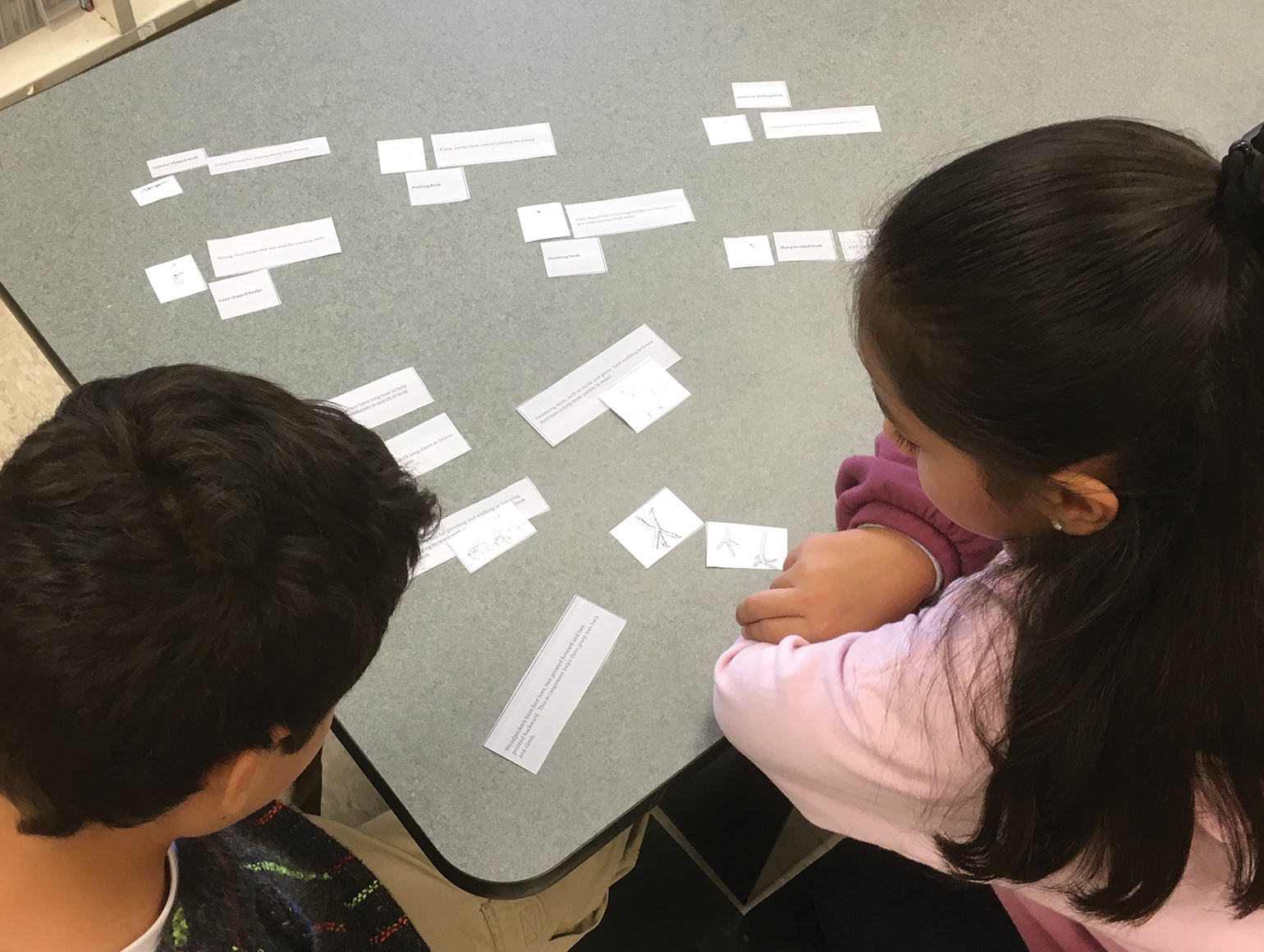
Students participate in a matching game.
For students to answer their research questions, they need certain science skills. Whether applying this model to school-based or distance learning, it is essential that teachers ensure that students master safety protocols and data collection skills before asking students to practice them at home. Using school campuses as data collection sites supports students in practicing necessary skills prior to embarking on field trips or independent data collection. Therefore, when students arrive at their selected site, or simply observe from their home window, they are already confident with the scientific tools, processes, and purposes. During distance learning, students can stay connected and engaged with their peers by sharing and comparing data. They can also compare the data they collected together at their school campus with their own at-home data.
Having students practice their data collection skills in advance has the added benefit of lessening logistics of the field trip. In the case of the fourth-grade bird-scientists, the logistics for the fall and spring pond field trips were similar, which simplified the planning further. Students were assigned to a small group led by a chaperone, provided a map of approved observation sites, and began timed observations at a designated zone marked on the map. Chaperones were given handouts with probing questions to help facilitate students’ sense-making and documentation processes; fortunately, students were already familiar with and invested in this process. After collecting bird data and making habitat observations at multiple locations around the pond, students returned to the classroom to process and analyze their findings as they had done after each school campus observation.
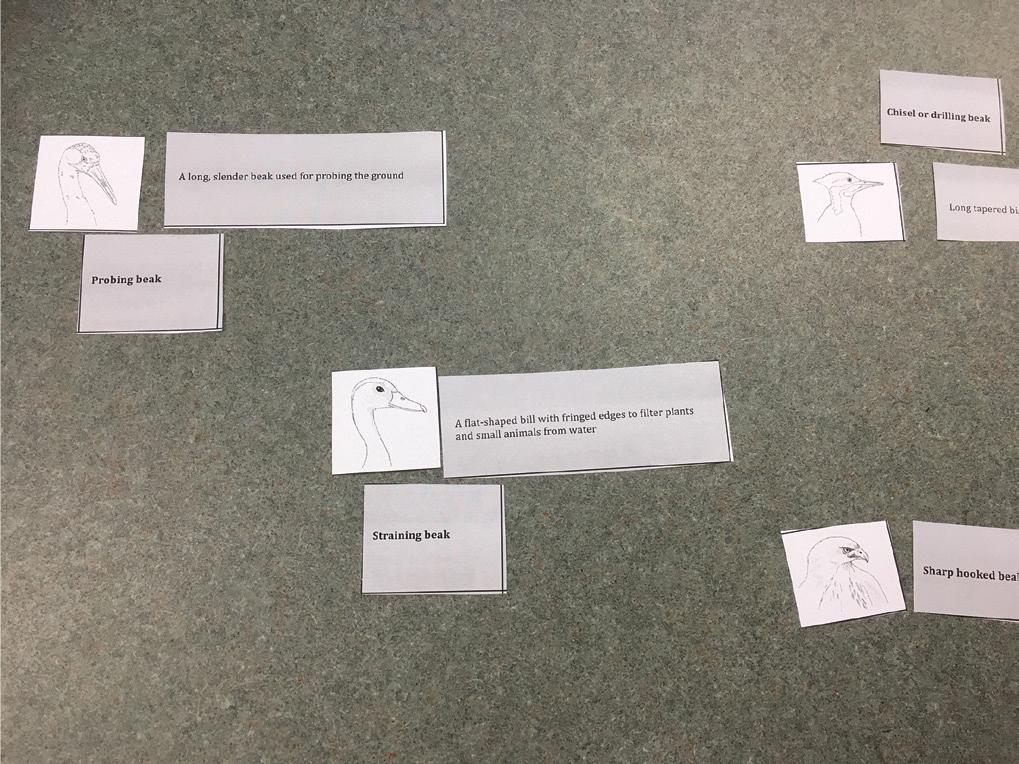
Images matched bird characteristics.
To engage students in community and citizen science during distance learning, simple and clear structures are needed to support student observations, data collection and meaning making. We suggest using Cornell Laboratory of Ornithology’s “Science and Nature Activities for Cooped up Kids” to provide parents with background content knowledge, step-by-step instructions on data collection protocols, and rationale for the investigation. Also, parents can learn how to engage their child in scientific dialogue through sentence frames (see “Supporting Scientific Discovery at Home- Parents’ Guide”).
Beyond Outdoor Activities
After their first field trip in the fall, Mrs. Harte’s students realized that conducting only two, three-hour field trips to the pond was a real limitation in contrast to the dozens of field observations conducted at their school. Many students were concerned that the data they had collected at the pond was simply not enough to draw conclusions. With permission from the local parks and recreation commission, the class designed a sign for the pond explaining their research project and soliciting visitors’ assistance in collecting more data. One student, Orlando, described the purpose of this sign, “So people can read it, and they can help us with our research, like if they find a bird that we haven’t, they can just post it (on eBird).” While back in class waiting for responses, students continued their individual research on species observed on campus to learn more about the needs of these birds.
This open sharing of data is foundational to community and citizen science projects and also an important activity for youth to feel ownership of the project (Ballard, Dixon, and Harris 2017). In addition to soliciting community members’ support in collecting data, students combined their data with the data on eBird to develop and present findings and recommendations to the commission, who oversaw the pond. Students used a Claim, Evidence, Reasoning (CER) framework to evaluate and justify the changes they were advocating for. Students shared their findings about the smaller bird populations seen in the fall when the pond was near dry. They explained the importance of retaining water in the pond to provide essential habitat to migratory birds they saw in the spring but also to birds year-round.
Conclusion
In reflecting on their presentation to the parks and recreation commission, Sonia explained the significance of sharing their scientific work with others, because it “[teaches] them it’s important to help with the ecosystem and all the things around you.” By investigating both the field trip site and their school campus, students gained (1) a broader understanding of their local ecosystem and the components within it and (2) a community audience with whom to share their findings with and have a dialogue.
Helping students understand the complexities of an ecosystem is challenging, but the Standards can be addressed by investigating local phenomena such as seasonal patterns, predator-prey relations, and species diversity. Using the school campus first to develop science skills and content knowledge prepares students for additional outdoor learning experiences, in which students apply their science skills within a community context. In sum, community and citizen science-based outdoor learning experiences connect campus investigations to a broader community context for continued and deepened real-life science learning.
As teachers engage in hybrid or distance learning models, community and citizen science projects conducted on the school campus and/or local neighborhood sites allow students to interact and connect around each other’s environmental observations and data. By focusing on skills while at school, supporting parents and students at home, and keeping engaged with the project using local or global citizen science projects such as eBird, students can stay connected to their school campus, local community, and each other despite the distance.
Resources
BirdSleuth Explorers Guidebook
https://www.birds.cornell.edu/k12/explorers-guidebook/
Card Sort: Matching Beaks and Feet
http://www.tnbirds.org/downloads/p5-7_BeaksAndFeet.pdf
Cornell Laboratory of Ornithology’s All About Birds
https://www.allaboutbirds.org/news/
Cornell Laboratory of Ornithology’s Science for Cooped up Kids
https://www.birds.cornell.edu/k12/science-nature-activities-for-cooped-up-kids/
eBird
https://ebird.org/home
Feather Atlas
https://www.fws.gov/lab/featheratlas/
Investigating Evidence
https://www.birds.cornell.edu/k12/investigating_evidence/
MerlinBirdID
https://merlin.allaboutbirds.org/
NSTA’s Field Trip Safety, 2015
http://static.nsta.org/pdfs/FieldTripSafety.pdf
Song Sleuth
https://www.songsleuth.com/#/
Supporting Scientific Discovery at Home: Parents’ Guide
https://education.ucdavis.edu/post/supporting-scientific-discovery-home
NSTA Connection
Download the C-E-R graphic organizer, NGSS connections, and other resources at www.nsta.org/science-and-children.
Erin Bird (bird@ucdavis.edu) is a postdoctoral researcher, Peggy Harte (mharte@ucdavis.edu) is education program manager at the Center for Community and Citizen Science, and Heidi L. Ballard (hballard@ucdavis.edu) is a professor of environmental science education and Founder and Faculty Director of the Center for Community and Citizen Science, all at the University of California – Davis in Davis, California.
Citizen Science Environmental Science Life Science Phenomena Elementary


